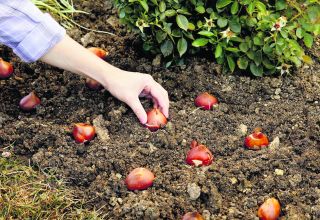May is with us and it brings many delights to our gardens. But don’t allow your excitement about the growing season ahead to fool you into assuming it’s summer already: this is the month when holding back can pay off in the long run. It’s still too cold for many tender plants to go outside fulltime. And think about letting go of your mower: leaving lawns to go wild allows all kinds of delights to flower, much to the joy of the bees.
1. Plan a ‘no mow’ May
Here’s a job to avoid this month: lock up your lawnmowers for No Mow May. This campaign by charity Plantlife encourages individuals and local councils to let grass in parks and on verges go wild for a few weeks, allowing dandelions, daisies, clover and other flowers to come into bloom and provide valuable pollen and nectar for bees and other pollinators.
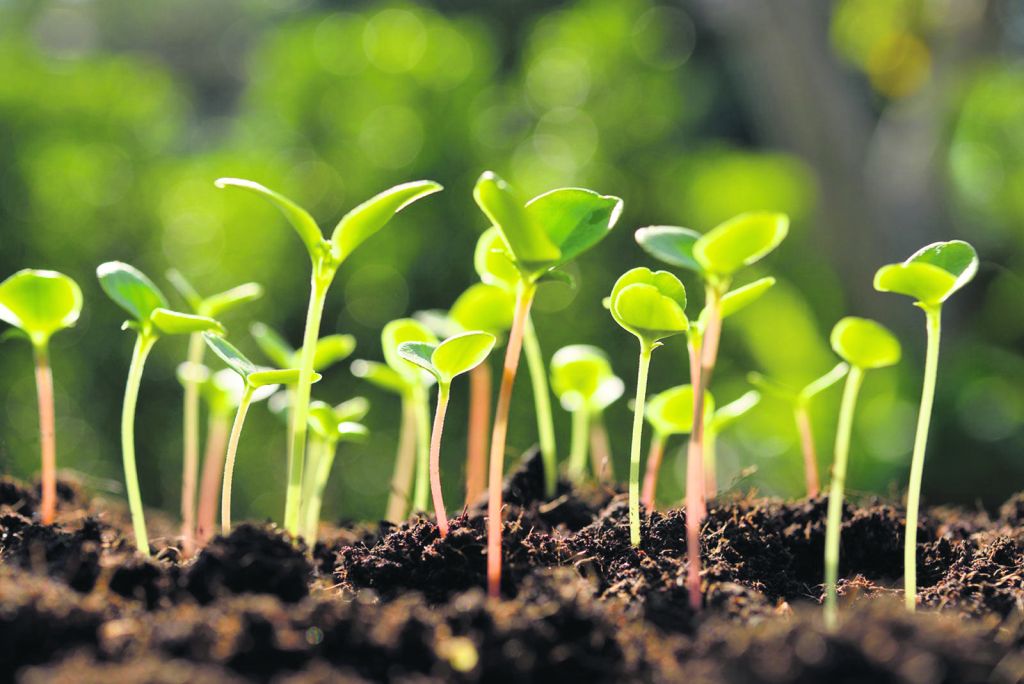
2. Thinning out – it’s a ‘must do ‘job
Thinning out young plants is a necessary evil when it comes to both vegetable crops and annual flowers. If you leave seedlings bunched together, they outcompete each other and the result is stunted growth. For vegetables such as carrots and beetroot, you can eat the pickings; for annual flowers such as love-in-a-mist, pot marigolds and cornflowers, carefully dig up the excess seedlings with their roots intact and you should be able to transplant them into any bare patches.
3. Leave spring bulbs alone
It’s tempting to cut back and tidy daffodil and tulip leaves once they have bloomed, but it’s best to avert your gaze and live with them for a bit.
Once your spring bulbs have finished flowering, leave them to die and break down naturally rather than cutting down the foliage.
If you have any spent flowers, deadhead to prevent plants from wasting energy creating seed heads. Add a homemade, liquid fertiliser around the clumps to help encourage strong growth for next spring. You can make your own liquid fertiliser from your compost heap – known as compost tea – or comfrey tea.
4. Do the ‘Chelsea chop’
Cutting the stems of flowering herbaceous perennials such as sedums and asters will keep plants smaller and encourage more flowers. This should not be done on flowers which flower only once, or flowers which are intended to be tall and striking. This is a way of staggering the blooming of plants that flower in bursts over the summer such as rudbeckias, catmint (Nepeta), echinaceas and heleniums. You can either cut every plant back by a third, or restrict your trimming to some clumps and leave others: either way, it should create bushier plants that flower over a longer period.
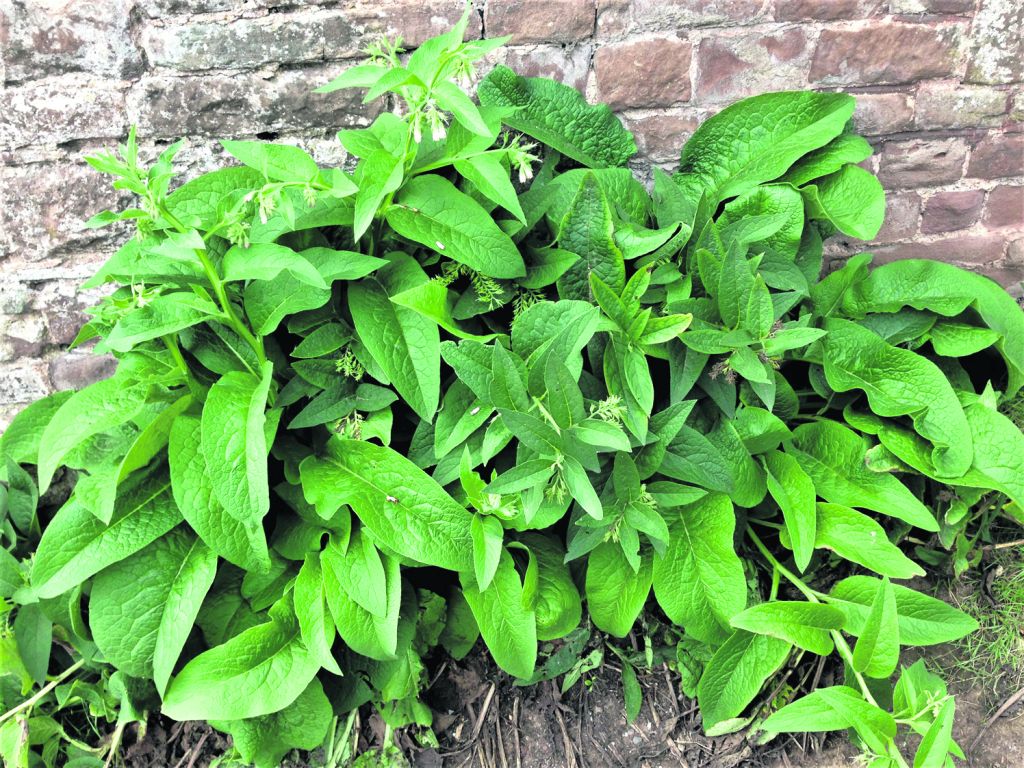
5. Take comfort in comfrey
Comfrey is a wonder plant – its tap root draws up nutrients from deep in the soil, and the leaves store nitrogen, phosphorus and potassium, making them perfect for use as fertiliser. You can harvest this foliage to make a liquid plant feed, add as a surface mulch or add to planting holes.
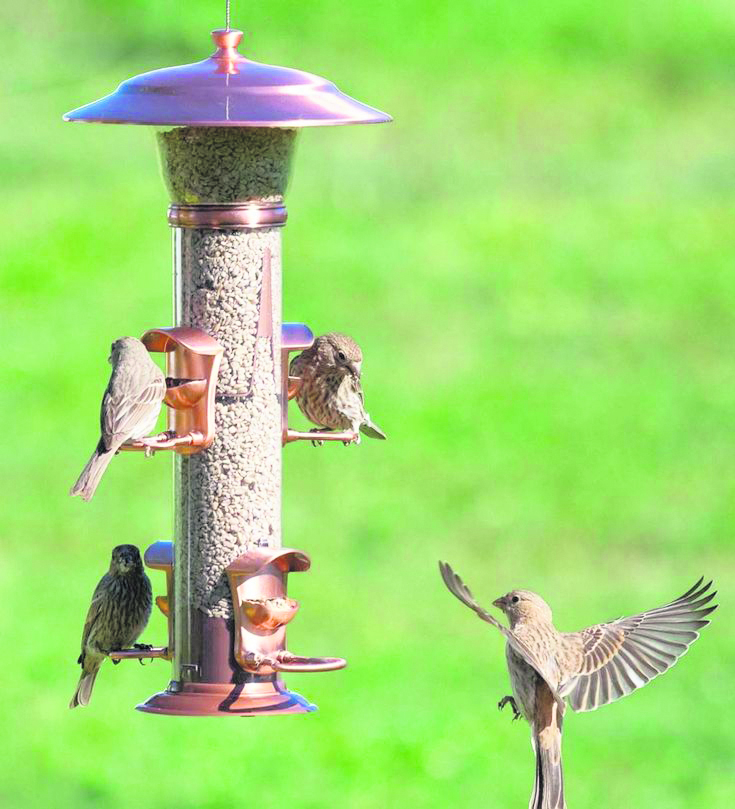
6. May is an important month for birds
Many gardens will play host to nesting birds so be careful not to disturb them particularly if you have dense hedges or trees. Don’t trim any hedge that has birds nesting in it – wait till the fledglings have flown the nest until you begin pruning. You can put up special nest boxes for swifts and house martins but swallows will nest on any suitable ledge or shelf so watch out for them in sheds and other outbuildings.
It is important to feed birds during the breeding season as parents and baby birds alike will need plenty of energy.
Don’t put out whole peanuts or other large chunks of food as there is a risk that the pieces could be fed by adults to their fledglings which could result in choking. Put out wild bird seed mixes or black sunflower seeds and kitchen scraps such as mild grated cheese, soaked sultanas, raisins and currants, oatmeal, and apples, pears and other soft fruit.
Put out a variety of bird feeders to attract different species. Hanging feeders will attract finches, tits and sparrows; bird tables will attract robins, doves, pigeons and bramblings, while food scattered on the ground or in ground feeders will attract blackbirds, thrushes, dunnocks and wrens.
Keep your bird bath topped up to provide a source of drinking water for birds. Be aware of hygiene and make sure you change the water regularly and scrub out the bath with a mild detergent to help prevent the spread of disease.
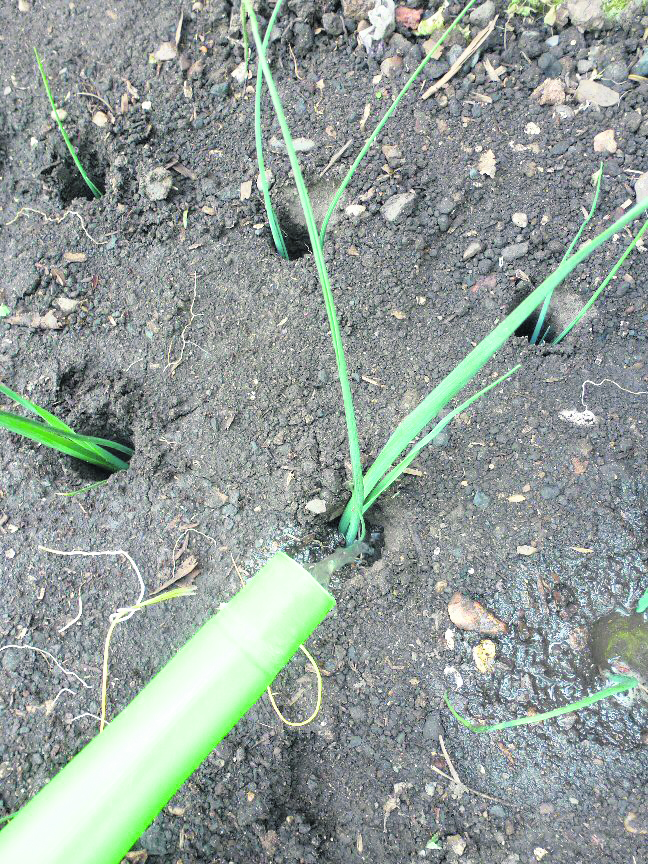
7. Plant leeks
Leeks that were sown last month can be planted outdoors. Allow around 30cm between rows to make weeding easier, and space plants at 15cm-intervals for full-sized leeks. If you’re short of space, plant closer together and harvest alternate plants as baby leeks, leaving the rest to grow on to maturity.
8. Feed your flowers and plants
Feeding now will pay dividends later, but you must use a slow-release fertiliser containing potash, to encourage more flowers. A general fertiliser can also be applied to roses, herbaceous plants and fruit. Avoid adding nitrogen-rich plant food: it produces too much leaf.
Vegetables will also respond to enriched soil. The easiest soil enhancer is well-rotted garden compost, so it’s worth making your own if you’re able to. You can also use well-rotted manure, although spreading it in early spring can be backbreaking. However, you can also buy bagged manure from garden centres. The best way to incorporate organic matter into a vegetable bed is to put some at the base of the planting hole. Squashes and courgettes benefit hugely from sitting above organic material because it aerates and warms the soil.
For brassicas sprinkle on a nitrogen-rich feed, such as chicken pellets or powdered chicken manure, straight after planting. Root crops prefer lighter soil and are generally best grown in soil that hasn’t been enriched.
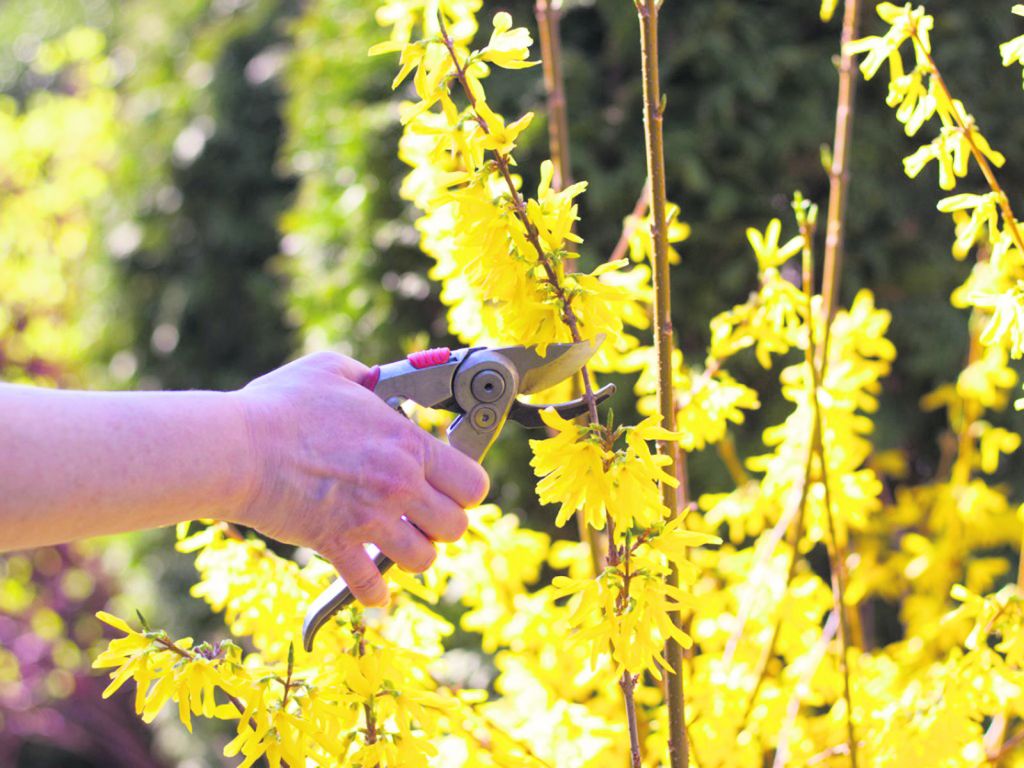
9. Prune forsythia
Prune forsythia after flowering. If you don’t do this every year, they quickly get unmanageable and flower less well. Using sharp loppers and secateurs cut a quarter of the old growth to the base. Also remove diseased, dead, dying and wispy stems cutting them to the ground. Finally prune stems that have just flowered to two buds above the previous year’s growth.
10. Stay on weather watch
At some point in May there is a tipping point: the risk of frost passes, and all the tender plants you’ve been tripping over indoors can be planted outside. So, keep an eye on the weather forecast and look for a rise in night-time temperatures – tomatoes, for instance, need a minimum of 10°C night and day before they can go out into a bed or container. May is the month to remove fleece covers from your veg, but have some at hand to cover newly planted or tender plants if frost is forecast. Hanging baskets, patio pots and tender border plants can also be moved outdoors once the danger for frost has passed. The later into May, the less likely it’ll occur, but a late frost could strike and blacken foliage and flowers. Harden off summer bedding and other tender plants in preparation for their transfer outside; this means putting them outside somewhere sheltered on warm days to gradually adjust to the conditions. Remember to bring them in before the temperature drops at night.
11. Flower seeds to sow in May
There’s no shortage of seeds to sow in the May garden, with many now being able to be sown straight into the soil outside.
Sunflowers, cornflowers, zinnias, nasturtiums, nigella, poppies and wildflower mixes can all be sown directly into beds, borders or outdoor containers.
In trays and pots you can start growing biennials and perennials, such as foxgloves, wallflowers, delphiniums, lupins and primroses in the greenhouse or on the windowsill to flower next year and years to come.
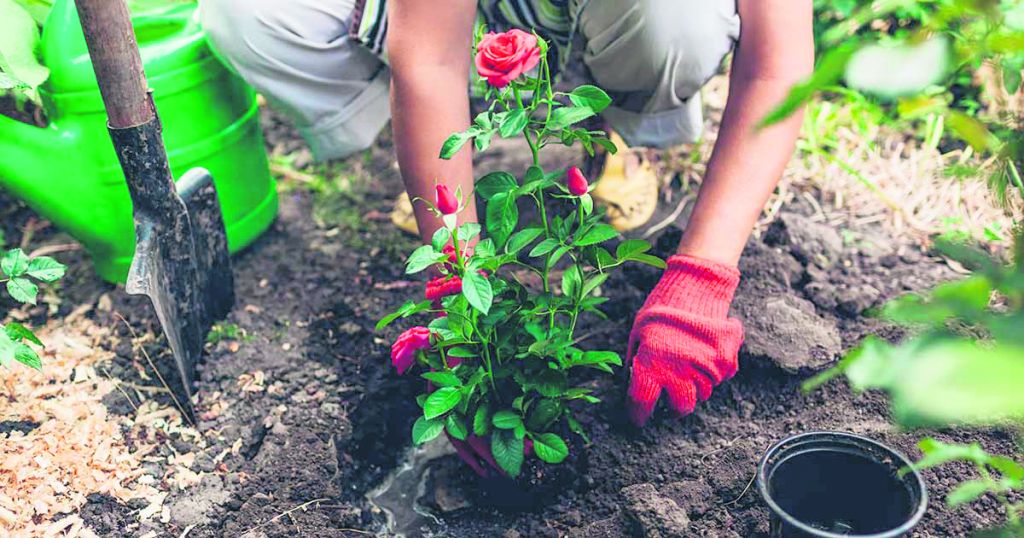
12. May is the perfect time for roses
Bare root rose planting season ended in April, so May is the ideal time to buy roses in pots from garden centres or specialist nurseries and plant them out for a dazzling display this summer.
There are so many delightful roses to choose from for different situations – from climbers to miniatures for pots on the patio. Decide where you’d like to add roses, whether you just want to cover a wall or arch, mix in with herbaceous plants or start a dedicated rose garden, Consider your colour scheme, the combination of scents and if you’d like a blaze of flowers in one blooming or repeat-flowering options.
There are two ways to buy roses: as container-grown plants, or as bare root plants.
Bare root plants are usually purchased online or via mail-order and come in a semi-dormant or dormant state with no soil on the roots. They are the preferred choice for many gardeners bare-root roses are generally the best quality and have a wider spread of roots than container plants.
If planting multiple roses, bare root plants are more economical and there’s also a greater variety.
13. PLUS…
- Water anything newly planted. Any veg or flowers planted this spring will need regular watering while they settle in and put down roots into the soil, especially during dry weather. This also applies to any new turf you may have laid.
- It’s best to wait until May before sowing French or runner beans, so they’re ready for planting at the end of the month. Plants sown too early will turn yellow if planted out too early and will struggle.
Finish planting maincrop varieties, such as ‘King Edward’, by early May for crops in late summer/early autumn. Plant the tubers 40cm apart in rows that are 60-75cm apart.
You can encourage your tulips to flower again next year by feeding them with tomato feed and removing any flowers that have faded. Bulbs in pots are best removed from the pots after they have finished, and then replanted deeply (around 15cm deep) in the border.





